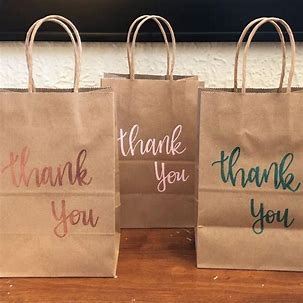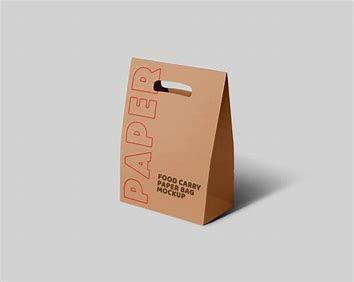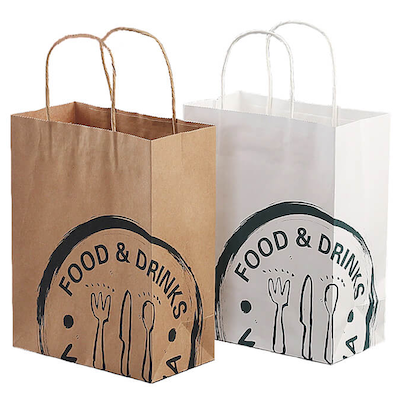Content Menu
● The Environmental Impact
>> Resource Consumption
>> Biodegradability and Recycling
>> Pollution
>> Wildlife Impact
● Usability
>> Durability
>> Reusability
>> Convenience
● Economic Factors
>> Cost of Production
>> Market Trends
● Public Perception
>> Consumer Preferences
>> Marketing Strategies
● Innovations in Bag Technology
>> Biodegradable Plastics
>> Reusable Bags
● Conclusion
● Related Questions
>> 1. What is the main environmental concern with plastic bags?
>> 2. Are paper bags truly biodegradable?
>> 3. Which type of bag is more cost-effective?
>> 4. Can both types of bags be recycled?
>> 5. What is a sustainable alternative to single-use bags?
● Citations:
The debate over whether paper bags are better than plastic bags has gained significant traction in recent years, primarily due to growing environmental concerns. As society becomes increasingly aware of the impact of single-use products on the planet, understanding the pros and cons of both paper and plastic bags is essential for making informed choices. This article will explore various aspects of paper and plastic bags, including their environmental impact, usability, economic factors, and public perception.

The Environmental Impact
Resource Consumption
One of the primary considerations in the paper versus plastic debate is resource consumption. Paper bags are made from trees, a renewable resource; however, their production involves significant water and energy use. It takes approximately four times more water to produce paper bags than plastic bags. In contrast, plastic bags are derived from petroleum, a non-renewable resource. The extraction and processing of fossil fuels contribute to environmental degradation and pollution.
The cultivation of trees for paper production also has its drawbacks. Deforestation can lead to loss of biodiversity, disruption of ecosystems, and changes in climate patterns. Sustainable forestry practices can mitigate some of these issues, but not all paper products come from responsibly managed forests.
Biodegradability and Recycling
Paper bags have the advantage of being biodegradable and compostable. They can decompose within a few months under the right conditions, making them less harmful to wildlife when littered. Plastic bags, on the other hand, can take hundreds of years to decompose. While they can be recycled, the recycling process is complicated due to contamination issues and low recycling rates.
The recycling infrastructure for both materials varies widely by region. In many areas, facilities that accept plastic bags are limited or non-existent. This leads to a significant percentage of plastic bags ending up in landfills or as litter in the environment. Conversely, paper bags are often more readily accepted in curbside recycling programs.
Pollution
The manufacturing processes for both types of bags contribute to pollution. Paper bag production generates more air pollutants compared to plastic bag production. The chemicals used in tree farming and paper processing can lead to acid rain and other environmental issues. Conversely, plastic production results in greenhouse gas emissions that contribute to climate change.
Additionally, the disposal of plastic bags poses a significant problem for waste management systems worldwide. Many municipalities struggle with the accumulation of plastic waste, leading to increased costs for waste management and environmental cleanup efforts.
Wildlife Impact
Plastic bags pose a significant threat to marine life. Animals often mistake plastic for food, leading to ingestion that can be fatal. Additionally, plastic debris can entangle wildlife, causing injury or death. Research has shown that marine animals such as turtles and seabirds are particularly vulnerable to the dangers posed by plastic waste.
Although paper bags are not without their risks, they are generally considered less toxic to wildlife when discarded improperly. However, it is important to note that excessive littering of any kind can harm ecosystems.
Usability
Durability
When it comes to durability, plastic bags have a clear advantage over paper bags. Plastic is lightweight yet strong, making it suitable for carrying heavier items without tearing. Paper bags are more prone to tearing and may not hold up well in wet conditions. This difference in durability affects consumer preferences; many people prefer plastic for its reliability.
Moreover, the strength of plastic allows it to be used in various applications beyond shopping—such as packaging food items or carrying liquids—whereas paper's limitations become apparent when faced with moisture or heavy loads.
Reusability
Plastic bags can be reused multiple times before they need to be disposed of, which can mitigate their environmental impact if consumers choose to reuse them. Studies indicate that if a single-use plastic bag is reused just once more before disposal, its environmental footprint decreases significantly.
Paper bags are typically less durable and may not withstand multiple uses effectively; however, some consumers choose to repurpose them for storage or craft projects after their initial use.
Convenience
Plastic bags are often seen as more convenient due to their lightweight nature and ability to carry damp items without leaking. They can also be folded easily for storage in a pocket or purse. Paper bags tend to take up more space and are bulkier when stored.
In addition to their physical attributes, consumer behavior plays a role in convenience as well. Many grocery stores offer self-checkout options where customers can quickly grab plastic bags without worrying about tearing or damage during transport.

Economic Factors
Cost of Production
The cost of producing paper bags is generally higher than that of producing plastic bags due to the raw materials involved and the energy required for manufacturing. This cost difference often translates into higher prices for consumers when purchasing products packaged in paper versus plastic.
However, as demand for sustainable products increases, economies of scale may shift production costs over time. Some manufacturers are investing in eco-friendly technologies that could lower costs associated with producing biodegradable materials.
Market Trends
As environmental awareness grows, many retailers are shifting towards using paper bags as part of their sustainability initiatives. Some jurisdictions have even implemented bans on single-use plastic bags or imposed taxes on them to encourage the use of more sustainable alternatives like paper or reusable cloth bags.
This shift has led many businesses to adopt paper packaging despite its higher costs. Retailers often market these changes as part of their commitment to sustainability which resonates with environmentally-conscious consumers.
Public Perception
Consumer Preferences
Consumer preferences play a crucial role in the popularity of paper versus plastic bags. Many people associate paper bags with eco-friendliness and sustainability due to their biodegradable nature. However, others prefer plastic for its durability and convenience.
Surveys indicate that while consumers express concern about environmental issues associated with single-use plastics, they still frequently opt for convenience over sustainability when shopping—often choosing plastic out of habit or availability.
Marketing Strategies
Retailers often market paper bags as a more environmentally responsible choice, appealing to consumers' desire to make sustainable decisions. This marketing strategy has led many businesses to adopt paper packaging despite its higher costs.
Moreover, some companies have begun implementing incentives for customers who bring their reusable shopping bags—further promoting sustainable practices while enhancing brand loyalty among eco-conscious shoppers.
Innovations in Bag Technology
As awareness grows around sustainability issues related to single-use products like shopping bags, innovations have emerged aimed at reducing waste while maintaining convenience.
Biodegradable Plastics
Recent advancements have led to the development of biodegradable plastics made from natural materials such as cornstarch or sugarcane fibers which break down more quickly than traditional petroleum-based plastics when exposed to certain conditions.
These biodegradable alternatives aim at bridging the gap between convenience offered by traditional plastics while minimizing long-term environmental impacts associated with conventional options.
Reusable Bags
The rise in popularity of reusable shopping bags signifies a shift towards sustainable practices among consumers who recognize their potential benefits over single-use options like both paper and plastic varieties.
Reusable cloth or fabric-based shopping totes are designed specifically for durability—they can withstand repeated use without degrading quickly compared with either type mentioned earlier—and they eliminate reliance on disposable options altogether.
Conclusion
In conclusion, both paper and plastic bags have their advantages and disadvantages regarding environmental impact, usability, economic factors, and public perception. While paper bags are biodegradable and recyclable, they require more resources for production and are less durable than plastic bags. Conversely, plastic bags are lightweight and strong but pose significant environmental challenges due to their long decomposition time and potential harm to wildlife.
Ultimately, the best choice may not lie solely in choosing between paper or plastic but rather in promoting reusable options that minimize waste altogether. Encouraging consumers to adopt reusable cloth or other types of sustainable shopping bags could significantly reduce environmental impacts associated with single-use products.

Related Questions
1. What is the main environmental concern with plastic bags?
Plastic bags contribute significantly to pollution and pose threats to wildlife through ingestion and entanglement.
2. Are paper bags truly biodegradable?
Yes, paper bags are biodegradable; they can decompose within months under appropriate conditions.
3. Which type of bag is more cost-effective?
Generally, plastic bags are cheaper to produce than paper bags due to lower raw material costs and energy requirements.
4. Can both types of bags be recycled?
Yes, both paper and plastic bags can be recycled; however, recycling rates for plastic are lower due to contamination issues.
5. What is a sustainable alternative to single-use bags?
Reusable cloth or other sustainable shopping bags serve as an effective alternative that reduces waste associated with single-use products.
Citations:
[1] https://recyclemybattery.org/pros-and-cons-of-plastic-bags-and-paper-bags/
[2] https://pakfactory.com/blog/paper-vs-plastic-bags-which-option-is-truly-the-best/
[3] https://www.greencitytimes.com/paper-bags-vs-plastic-bags/
[4] https://stanfordmag.org/contents/paper-plastic-or-reusable
[5] https://www.polybags.com/paper-vs-plastic-bags/
[6] https://news.climate.columbia.edu/2020/04/30/plastic-paper-cotton-bags/
[7] https://perfectpackaging.org/environmental-impact-of-plastic-vs-paper/
[8] https://www.packaging-gateway.com/features/sustainable-showdown-plastic-vs-paper-bags/
[9] https://www.greenmatch.co.uk/blog/plastic-paper-or-reusable-bag
[10] https://www.bbc.com/news/business-47027792
































